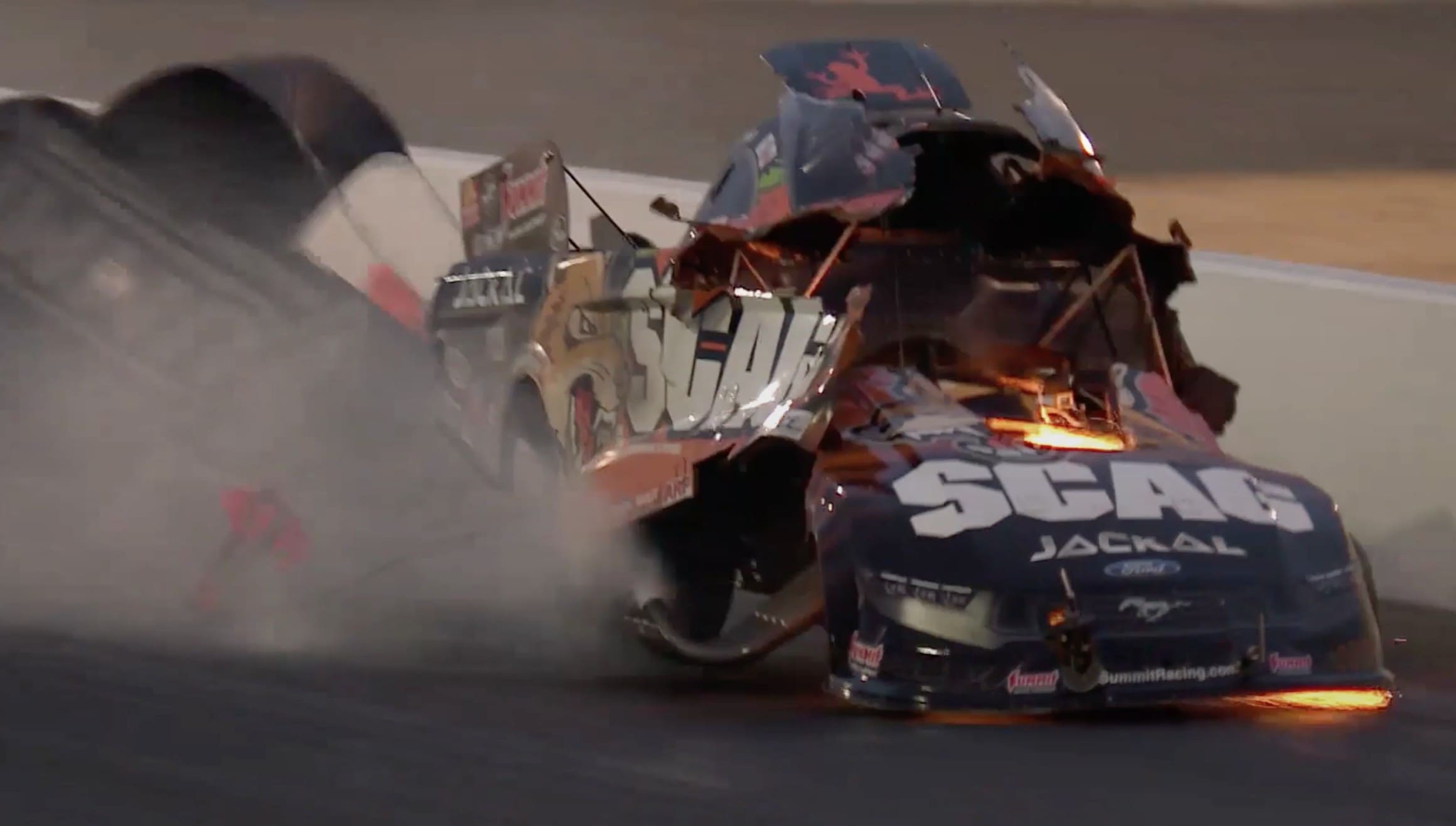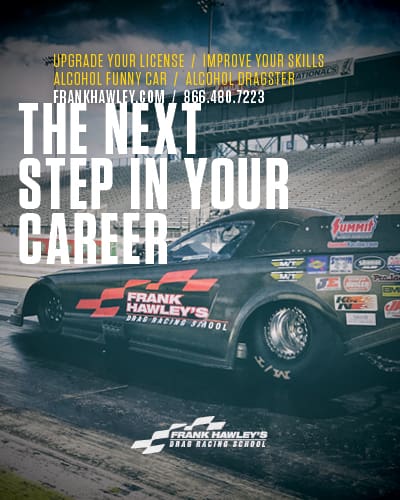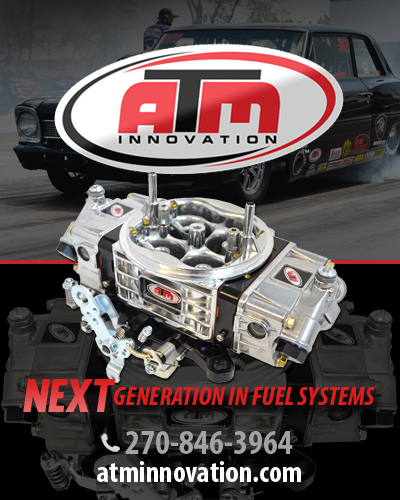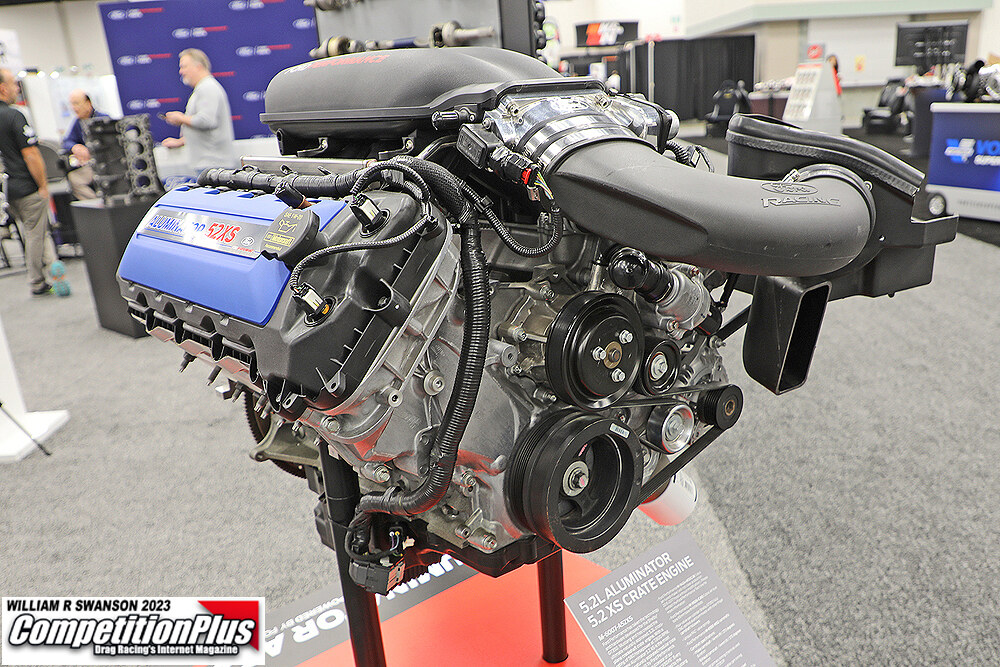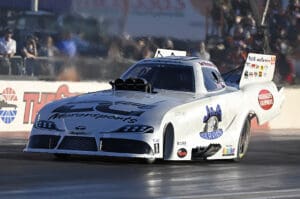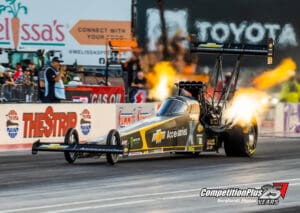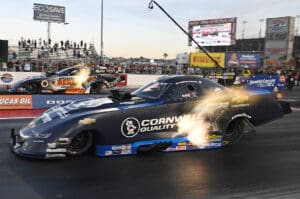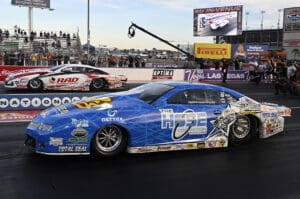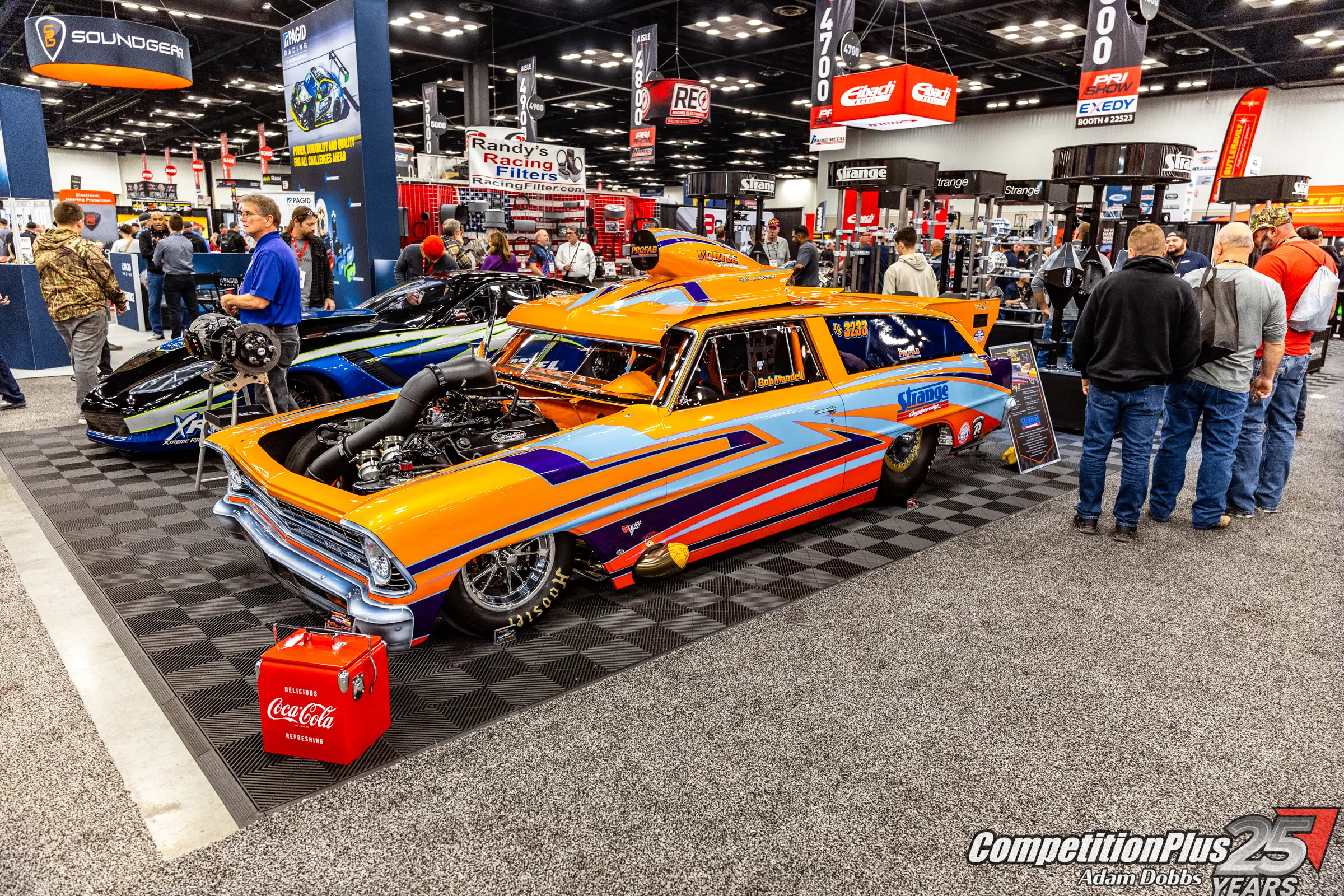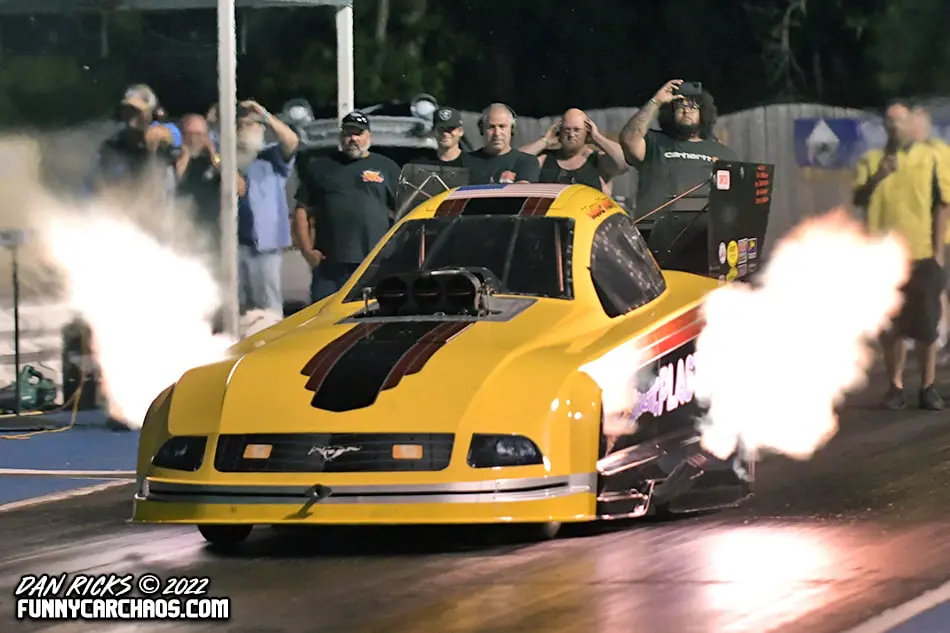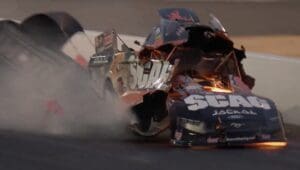A pair of violent engine explosions during Funny Car qualifying at the NHRA Sonoma Nationals has reignited a safety debate surrounding the tethering systems designed to keep carbon-fiber bodies from launching into the grandstands. But after two drivers were left blinded by debris and trapped in flames, many within the pits say the current system may be protecting fans at the expense of the drivers.
Tim Wilkerson, a veteran Funny Car racer now serving as crew chief for his son Daniel’s SCAG-backed Mustang, didn’t mince words after watching Daniel pilot his car to a stop while unable to see out of the cockpit.
“We all know that we can’t put bodies in the stands, but I just think we’ve proved to ourselves in the last five years that we need to find a different way to do it,” Wilkerson said. “In my opinion, we hurt our Dale Earnhardt — John Force. We hurt the king of our sport because of the tethers. But is there a better way to do it? I think we just need to start looking because we can’t keep doing what we’re doing.”
The explosion that consumed Daniel Wilkerson’s car Friday night split the Funny Car body in half. Though he escaped injury, the back half of the body remained tethered to the chassis, obstructing his vision. His father said that problem isn’t new — and it isn’t going away.
“Capps got the nose of his car stuck on the front of it there at Phoenix, and he went across the center line and crashed into the other wall,” the elder Wilkerson added. “Could have easily gathered up another car at the same time. After all of this, we need to do something.”
Wilkerson said he has submitted proposals to the NHRA, though testing such safety mechanisms is nearly impossible under real conditions. He praised NHRA officials and rival crew chiefs for being open to dialogue and willing to reconsider the system’s merits.
“The problem with all this is there’s no way to test it. That’s the biggest problem with all of it,” he said. “I went to a lot of crew chiefs, including the ones that are for tethers, and they had other ideas also. I was glad to see that they were at least receptive to talking about it because you don’t have to be very smart to watch this and know that someday we’re going to really hurt a driver.”
Wilkerson noted that driver-to-driver contact is also a growing concern in these scenarios.
“I’m more worried about one of us collecting each other too, going down through there,” he said. “Ours was fortunate, it just blew up and Dan just couldn’t see where he was going. Buddy Hull’s was a little worse. His dash ended up in his face and wrapped around his driver’s compartment.”
Wilkerson said chassis builder Murf McKinney is already involved in developing an alternative system. “He’s a smart guy and he’s talking with all the other crew chiefs too. We’re going to try to get PBRC involved with it. They’re not dumb people. They’re smart people too. And the guys from JFR, they have good ideas too.”
Though Wilkerson was reluctant to publicly share design specifics, he said a widely supported concept involves allowing the body to detach and fall behind the car. However, this brings its own hazards — primarily concerns of the body fouling the parachutes and preventing the car from stopping.
“We’ve talked about ways of just letting it fall off and dragging it behind us, which is probably everyone’s consensus,” Wilkerson said. “They like that the best, except we’re concerned with it getting wrapped up in the parachutes and the car not stopping.”
Wilkerson noted that in many incidents where the body launches off the car, the parachutes fail to deploy anyway.
“If you historically look at these kind of blowups, majority of the time the parachutes don’t get to come out because the body flies straight up in there and the parachutes are aimed at the ground and they get tangled up,” he said. “Mine came out at Sonoma, but I think that was just pure chance and pure luck.”
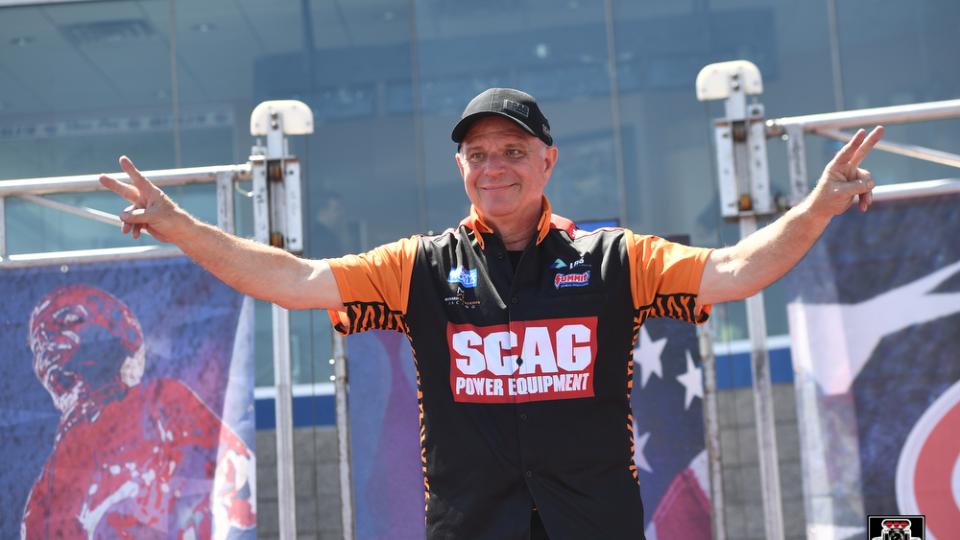
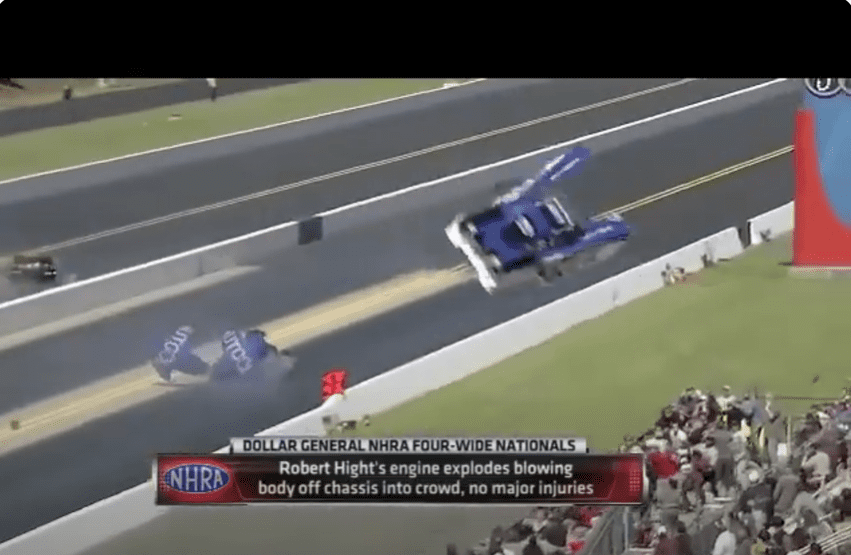
For Wilkerson, the issue comes down to a repeated pattern of risk with insufficient response.
“It’s just very disturbing to watch the same thing happen over and over and over, and we all just go, ‘Well, that’s what we got to do,’” he said. “My dad used to say, ‘If the doorway was five feet tall and you bumped your head on the damn doorway walking through, after about the third time, you’d probably duck.’”
Wilkerson added, “Surely as smart as all of us are, we can figure out how to keep bodies out of the stands and still keep the driver safe. Because right now the driver’s not safe. He’s second choice.”
The current tethering system was mandated by NHRA in April 2013 following Robert Hight’s engine exploded at the Four-Wide Nationals in Charlotte, where part of his car’s body was launched into the air and landed outside the racing surface. The rule required both a dual-latching system and ballistic tethers to retain the body in the event of a catastrophic failure.
Chassis builder Murf McKinney, who helped design the current setup, explained its function.
“The tether works in conjunction with the dual front latch system,” McKinney said. “The dual front latch system is a positive latch system that will not come loose. So the tethers go up and anchor at the base of the windshield and to the bracket on the front latch.”
McKinney declined to give an opinion on whether the system is flawed but acknowledged improvements are possible.
“The tether system does what it was intended to do, but that doesn’t mean that we can’t learn and make it better,” he said. “To just stay at the same thing for 20 years, just because we did it in the beginning, doesn’t mean that we should do it forever.”
Dean “Guido” Antonelli, crew chief for Ron Capps, was more specific in identifying the culprit: the dual-latching system itself.
“To me, most of these issues have all come with the dual front latch system,” Antonelli said. “It is so robust that it doesn’t let any of the explosion out. The body doesn’t lift an inch, and so it doesn’t let any energy out.”
Antonelli said his proposal would involve a hinge-based latch system that allows the front of the body to rise in the event of an explosion but remain tethered.
“When it needs it and it explodes and lifts a body, it would un-heat shrink the tethers, and they’d be 24 inches long, which would allow the body to go up about 17 or 18 inches,” he said. “It contains it, but allows it to vent.”
He also noted the cost to teams — when a body is destroyed in an explosion, repairs can cost upwards of $20,000.
“I look at it as a cost savings for the teams also,” Antonelli said. “Anybody could say the tethers could be dangerous or you could say anything can be dangerous because these cars go 340 mile an hour.”
Antonelli said he has proposed improvements in the past but was told they could not allow body launches, no matter the reason.
“Having to drive blind — I don’t think that’s ever a good situation,” he said. “But again, we can’t put them in the grandstands, but we can’t hurt a driver either.”
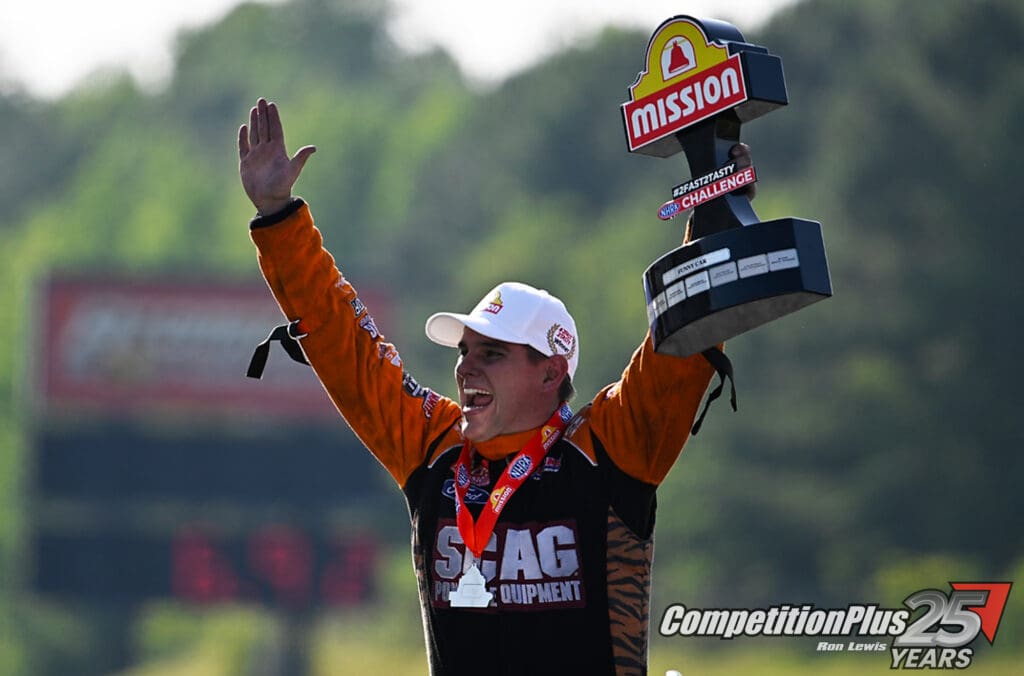
Matt Hagan was the first driver to speak out following John Force’s crash at Virginia Motorsports Park that left the 16-time champion with a traumatic brain injury.
“Tying these bodies down … if those chutes come out and that body goes away, the fire goes away,” Hagan said on the Dale Jr. Download. “It’s just so much energy down there at the finish line … I’ve been a big voice of being against that rule for a long time.”
Hagan said the current system may prioritize the wrong outcome.
“I understand [fan safety] … but tying these bodies down is just the wrong way to go,” he added.
Daniel Wilkerson, still shaken the day after his Friday explosion, was blunt in his post-run comments.
“I can tell you I’d feel a lot more comfortable if it would’ve fallen off,” he said. “There’s a few rules in place that keep it from falling off right now … but I can tell you now, I’ve had three of those and two of them, I felt like I was in real danger.”
Wilkerson said he understands the need for spectator protection but noted the risk of losing control is very real when a driver can’t see.
“All I could think about was running over into Chad’s lane because I had no idea where I was,” he said. “If you would’ve told me … you were on the return road, I would’ve said, ‘Maybe. I don’t know.’”
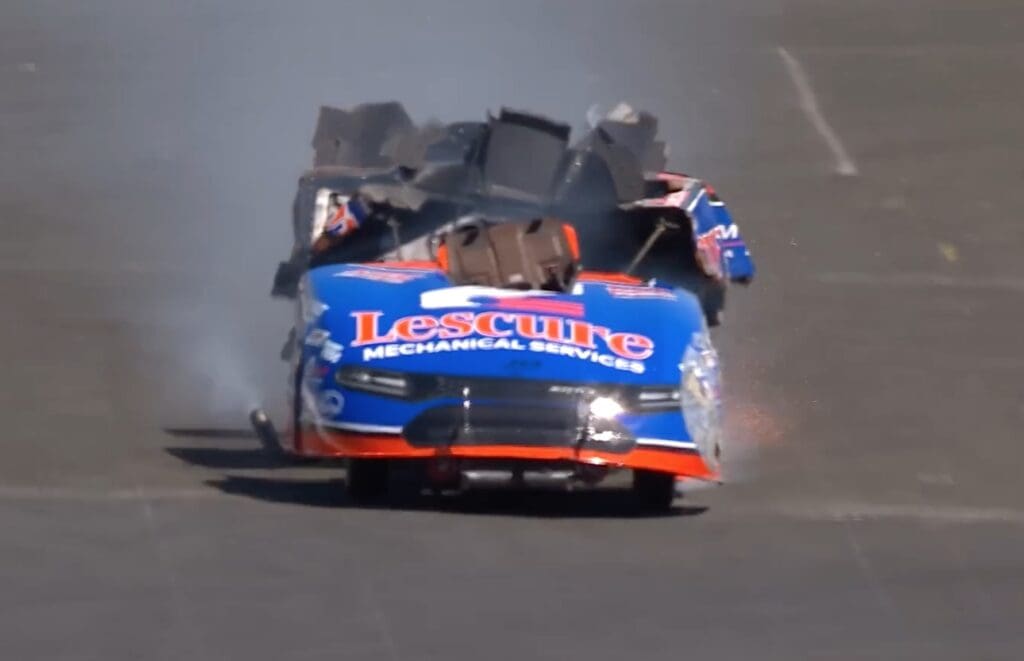
On Saturday, Buddy Hull experienced a similar incident when his Funny Car exploded, filling the cockpit with smoke and debris.
“You can’t see through the fire … and then you got the body obstructing your view,” Daniel Wilkerson said. “I feel like the current situation puts drivers in danger.”
To their credit, NHRA officials met with Wilkerson and others immediately after the incidents to begin exploring solutions.
“We’re looking at all kinds of options,” Wilkerson said. “The great part about NHRA is … we’ve already talked about it.”
What comes next is unclear. Proposals are still being drafted, and the
tension between driver safety and fan protection remains unresolved. But the consensus among crew chiefs, builders, and drivers is clear: the current system isn’t working as well as it needs to — and the clock is ticking before the next catastrophic outcome.
“We all take the same inherent risk,” Tim Wilkerson said. “I’m not disputing the risk of driving a 330 mile an hour rolling bomb, but still at the same time, when the atmosphere and the situation show you that you’re doing the wrong thing, we need to change it.”





